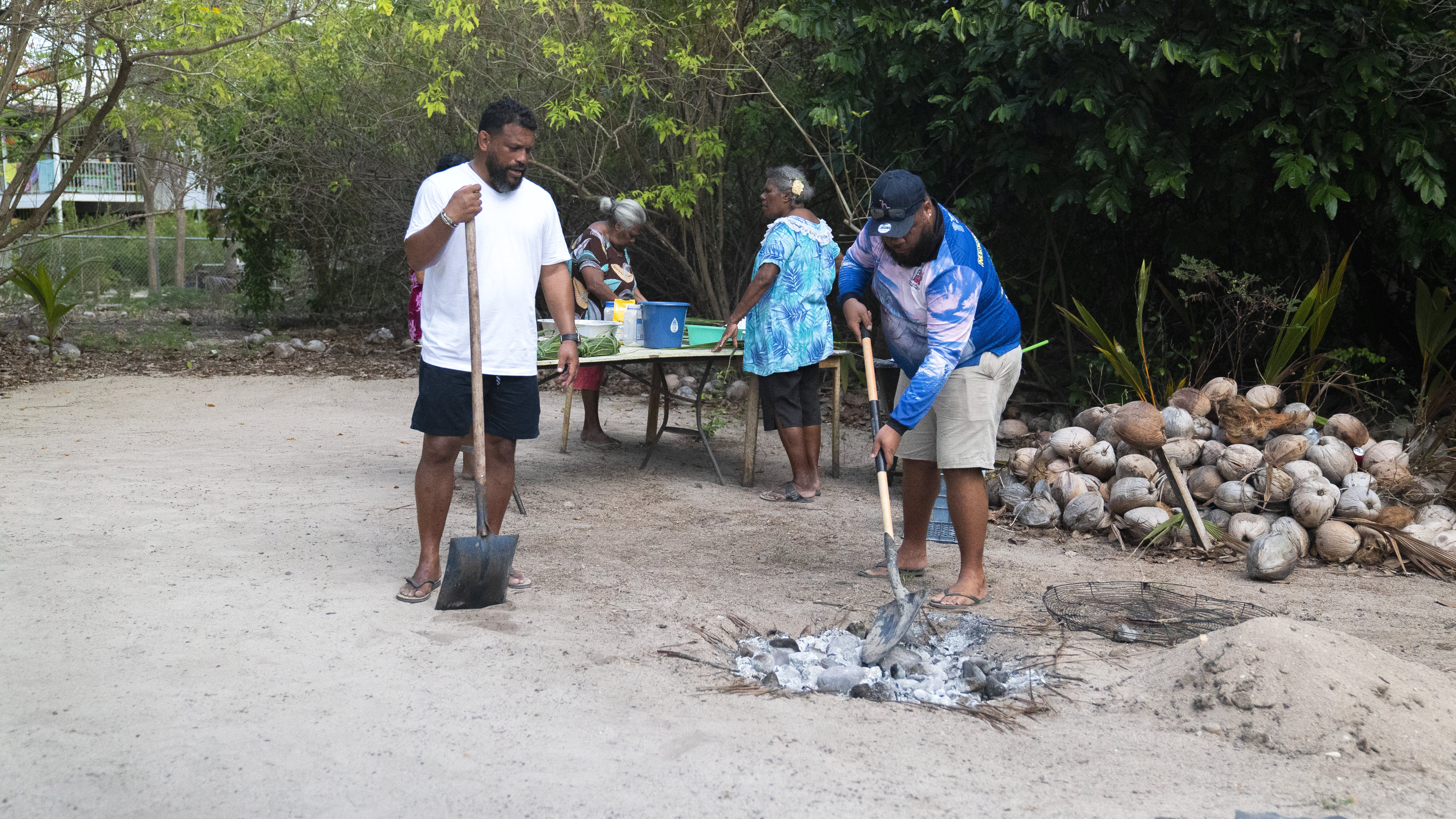--- Watch Aaron Fa'Aoso in Strait to the Plate, 8pm Thursdays on SBS Food, NITV, or stream it free on ---
A humble way to explore the essence of Torres Strait Islander peoples is to sample the strength of their culture by tasting traditional foods.
One of the most common foods on the Island of Warraber in the Kulkalgal region of Torres Strait is damper. Women have been making amay damper dough (as it’s commonly called) on the island for thousands of years.
As we learn in the new SBS series , amay damper has always been cooked in an earth oven. Woven coconut leaf parcels filled with amay dough get tossed into an amay pit that’s filled with hot coals. The parcels are then covered with leaves and sand, and left to cook for about an hour.
When the damper is ready to eat, it tastes soft, fluffy and so inviting you’ll want to reproduce its epic flavours at home. But how, especially if you’re backyard isn’t big enough for an earth oven?

Host of 'Strait to The Plate', Aaron Fa’aso, joins locals of the Island of Warraber to make damper and cook it in an Earth oven. Source: Image from Strait to The Plate
Get out your Dutch oven
To replicate the cooking process that happens when damper is made underground, you have to re-create a protected atmosphere of heat and steam. To do that, you must befriend the Dutch oven in your cupboard.
The covered earthenware or cast iron pot – AKA a Dutch oven – has very thick walls, a heavy bottom and tight lid. These features assist in heating the damper dough evenly throughout the cooking process. Put simply, a Dutch oven will help to create a loaf that has a crusty shell and fluffy interior, without a campfire.
Choose your cooking method
Once you’ve made your damper dough and you’ve got your Dutch oven on hand, it’s time to decide how you’re going to bake your loaf in a way that guarantees a consistent temperature around the whole pot. An easy way to achieve this is to use your kitchen oven and create a double-oven effect.
To start, placing your damper dough in a lightly oiled Dutch oven, then close the lid. Put the Dutch oven in an oven, pre-heated to 220°C and bake for 30-35 minutes.
Temperature and times will vary according to the size of your dough, Dutch oven and oven features (fan-forced, strength and so on). But if you’re in doubt, you can check to see if the bread has finished cooking by tapping on the loaf with your fingers – if you hear a hollow sound, the damper is done.
Or, you can push a clean skewer into the middle of the loaf. If the skewer comes out clean, it’s also done. If not, then you need to bake it for longer.
Embrace the barbie
You can also try baking damper on your BBQ. indirect cooking over medium-low heat (170°C to 190°C).
They specify that damper should be cooked on the BBQ with the lid closed, until the top of the loaf is golden brown. Don’t get tempted to open the BBQ lid during the cook to see how it’s going. Constantly opening the lid will let the heat escape – that won’t work well for your loaf.
Cook your damper for at least 45-50 minutes before opening the lid. Once that time has passed, you can use a meat thermometer to judge if the bread has cooked for long enough. When the bread reaches an internal temperature of 90°C, it is ready.

Nornie Bero cooks her damper wrapped in banana leaf Source: Frank Yang
Experiment with your appliances
The damper creativity doesn't stop there. Home cooks can recruit the assistance of a bread maker or air-fryer to create a show-stopping loaf with a crunchy crust.
If you opt to use your bread maker, follow the manufacturer’s instructions for a yeast-free bread setting. Choose a medium crust if your bread maker has this option.
On the other hand, air-fryer damper territory is a lot more uncharted, so be prepared to experiment. Flatten and then shape the dough before placing it on the bottom of a cake tin (lined with baking paper).
Then cook away according to the manufacturer’s operating instructions. Air fryers vary broadly, so play around with the temperature and time. A good place to start is at 180°C for a 25-30 minute cook.
Savour the history behind each bite
Once your damper is done using any of these methods, allow it to cool under a tea towel for about five minutes. Then enjoy.
As you’re savouring the flavours of homemade damper, just remember: were it not for the traditional Indigenous peoples who have been making damper for centuries in earth ovens, you probably wouldn’t have the luxury of making your own loaf at home. So be sure to relish the cultural history behind each bread bite.











